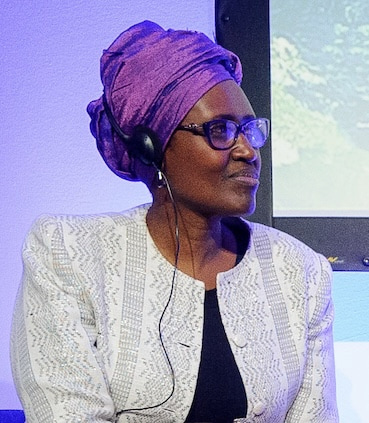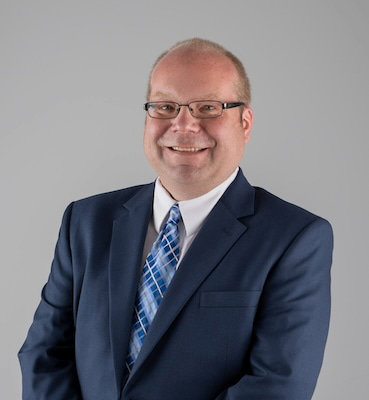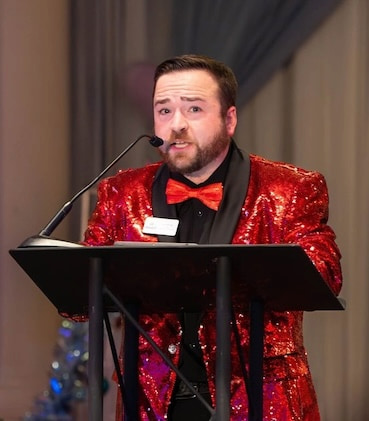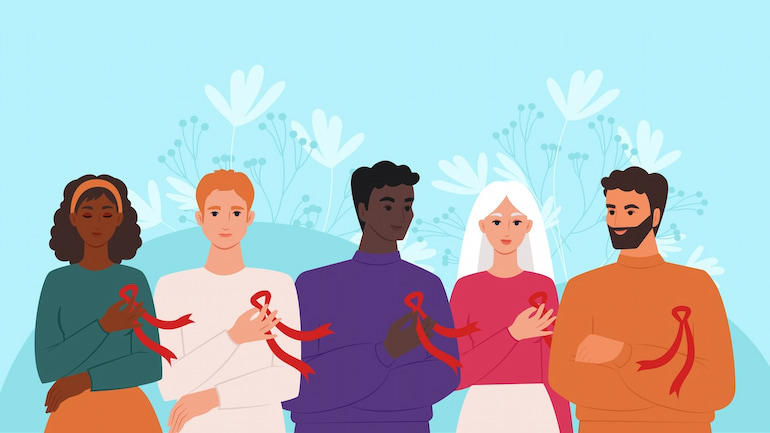It was just six months ago that leaders in the worldwide fight against HIV were predicting AIDS could be eliminated as a public health threat by 2030.
Now, mere weeks into the Trump administration’s gutting of federal agencies, those same leaders are concerned rather than optimistic. They’re concerned that cuts and chaos may cause new cases of HIV worldwide to double by 2029, make it easier for more potent virus strains to evolve more quickly, and increase AIDS-related deaths worldwide tenfold.
“We will see a surge in this disease,” said UNAIDS Executive Director Winnie Byanyima, below, this week to the Associated Press. “This will cost lives if the American government doesn’t change its mind and maintain its leadership.”

A waiver that is supposed to leave HIV-related and other essential health funds flowing has helped but continues to have complications. And while local, regional and state-level groups aren’t yet feeling direct impacts over the federal funding confusion, some say they’re fielding anxiety from clients or taking steps of preparation now.
Central Illinois Friends, for example, is in “overdrive” managing client anxiety. The Project of the Quad Cities that serves both Iowa and Illinois is also focused on relieving client and staff anxiety, and kicked off an emergency fund drive last week in case more funding cuts happen in a few months, and threaten actual services or staff positions.

Uncertainty hovers over coming months
“With all of these challenges and delays, we don’t know what’s going to happen,” says Jeffery Erdman (above), associate executive director of programs for the Illinois Public Health Association, which coordinates HIV care and case management through the eight-member, statewide Illinois HIV Care Connect network.
Erdman said that despite a waiver from Trump’s federal funding freeze that allowed HIV medication funding to flow again within days of it being stopped, what’s happening with the federal US AID agency is also affecting the fight against HIV.
And while a judge blocked the firing of thousands of US AID workers, thousands more workers and contractors have already been laid off.
That included many workers who helped administer the medication internationally, or conduct the HIV tests that discovered who needs the medication. Erdman agrees with Christine Stegling, deputy director of UN AIDS, that HIV testing may be getting less priority in the frenzy.
“What we’re really concerned about is that…governments will focus right now on keeping people on treatment rather than preventing new infections,” she said.
Other frozen funds or cuts to US AID stopped systems that transported or stored the medication.
So the fall-out has continued. In Uganda, for example, all HIV clinics are closing. Ethiopia has fired 15,000 public health workers and data clerks who were working in HIV programs funded by the United States, reports Health Policy Watch.
Kenya fears not only greater spread of HIV, but also economic distress because of the many workers who had been employed by anti-HIV programs funded by the United States that are now terminated.
In today’s world, Erdman said, it’s important to recognize that what happens in other countries affects America. He said it’s a lesson re-amplified in 2022, when an mpox outbreak started in Africa but made its way to the United States and Britain.
“There is so much global travel now, and so much work done in other countries that we are bringing back to America,” Erdman said. “These things happen rapidly and globally now. They don’t just stay in one part of the world.”
In addition, even though the federal freeze has been halted for now, the Trump administration’s overall attitude toward HIV is compelling some providers to remain wary, and prepare.
TPQC, which has 800 clients with HIV in 22 counties in both states, announced its emergency fund drive even though it hasn’t yet experienced any direct impacts from the funding cuts. About $1.3 million of its funding, equal to a third of its revenue, is connected to federal funding.
That’s why TPQC is keenly aware that the current federal budget expires in mid-March, says Tyler Mitchell, communications, marketing and development director at The Project.

Tyler Mitchell of The Project of the Quad Cities
“With US AID and what has happened there, the speed with which that organization was quickly dismantled, it was astonishing, and not in a good way,” Mitchell said. “That, plus we have RFK Jr. who may become secretary of HHS, who has made some very incorrect and false statements about HIV in the past.
“We don’t know anything for sure, other than the general direction we’re going is leaving us concerned.”
Ryan White Fund’s future has some worried
Of greatest concern is the hallowed Ryan White program created in 1990 to help uninsured and underinsured people living with AIDS pay for care, medication, food, housing and other support. Currently, more than 500,000 people – more than half of Americans living with HIV – receive assistance from the $2.5 billion fund.
But the program hasn’t been formally reauthorized since 2005 and expired in 2013, though it has continued to receive funds through the general budget approval process since then.
Because of that, Mitchell said, it may be especially vulnerable to the Trump administration’s wide-swath funding chops. And because many HIV care workers are paid for with Ryan White funds, a cut to the program would mean staff cuts.
Erdman agreed that HIV service providers and advocacy groups are growing increasingly worried about the fate of the Ryan White program. He also said the Trump administration’s disruption of HIV services was especially cruel because of how HIV works as a virus.
“The key thing with HIV is you have to take your medication every day,” he said. “Otherwise, HIV rages back and can overwhelm your immune system. Just missing your pill one or two days a week can mess with your immune system,” and thousands of people worldwide were likely forced to disrupt their medication cycle because of the funding freeze and confusion, he said.
Trump’s attacks on diversity, equity and inclusion (DEI) also affect HIV outreach, Erdmann said. He’s concerned that cutting DEI efforts out of health care could lead to “worsening health outcomes.”
“What we know is that when you focus on an individuals’ culture and inclusiveness including all populations, that helps improve health outcomes. It’s not just about race. It’s about having language translaters, understanding disabilities, different generations, different cultures, different ethnicities ….”
Central Illinois Friends, which served 3,000 people in 24 Illinois counties last year with HIV-related services and support, hasn’t experienced any impacts from the funding chaos but has fielded lots of anxiety from community members, says Selena Pappas, public relations and marketing director.

Selena Pappas of Central Illinois Friends
“We understand they’re in a moment where they are scared, and we are really working to meet that moment despite the uncertainties of what may come,” she said. “Our support staff has been working in overdrive.”
The group just opened a new LGBTQ+ community center in Peoria, which has helped it connect with anxiety-ridden community members. Central Illinois Friends also has offices in Galesburg and Bloomington.
The challenge for HIV service providers is to be prepared, but not panicked, and to avoid generating needless panic for their clients and staff, says Mitchell.
“We’re trying to balance communicating with people when they need to, as opposed to creating so much pre-emptive anxiety,” he said. “We are open and providing services to the communities that we serve in the same way that we did on Jan. 19, before Donald Trump was inaugurated as President.”
Overall, U.S. HIV prevention efforts have been pivotal to providing treatment to 27.5 million of the 37.7 million people worldwide living with HIV.
Global HIV prevention efforts are credited with preventing at least 16.5 million AIDS-related deaths since 2001, and reducing annual AIDs-related deaths by 58 percent since 2001.


